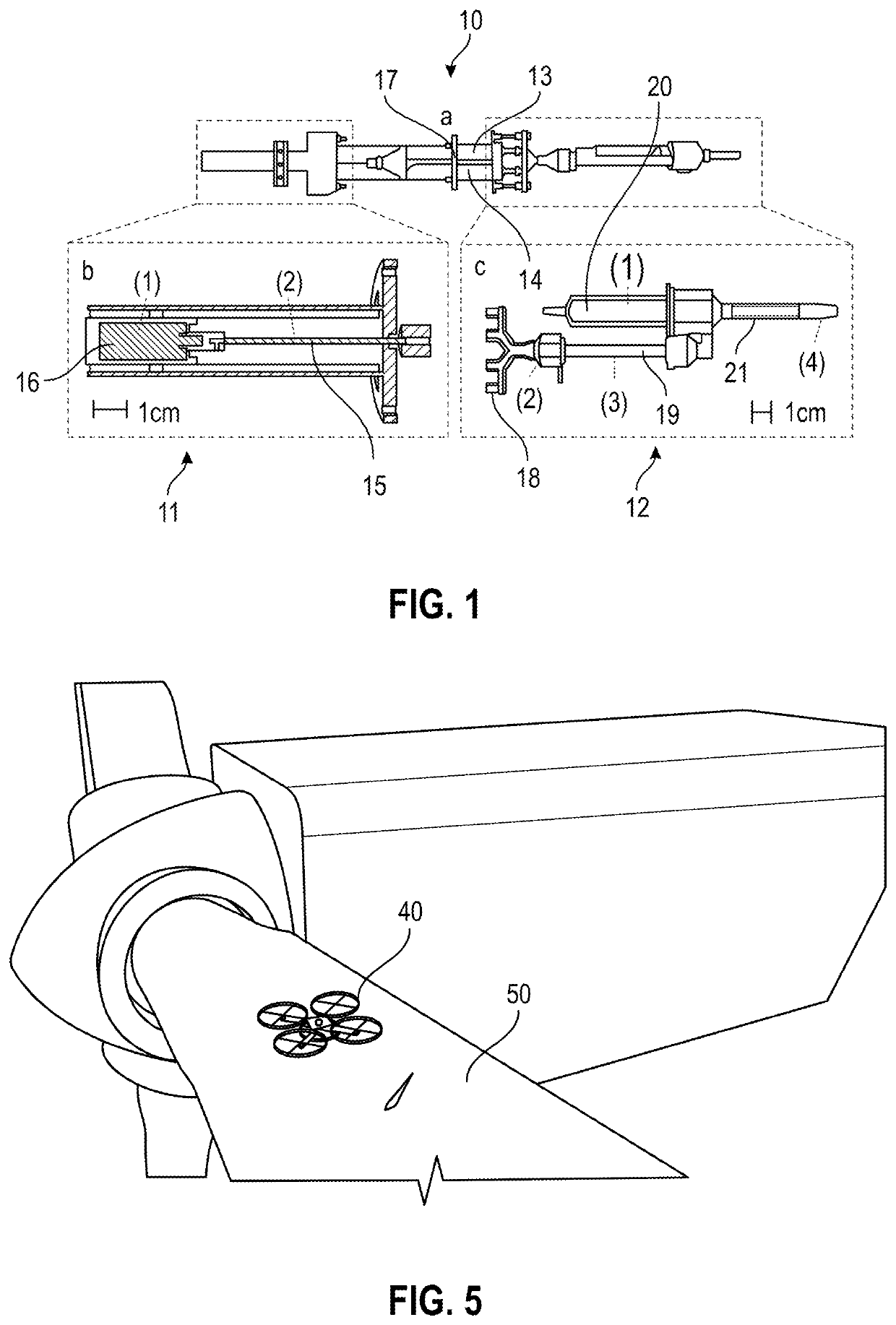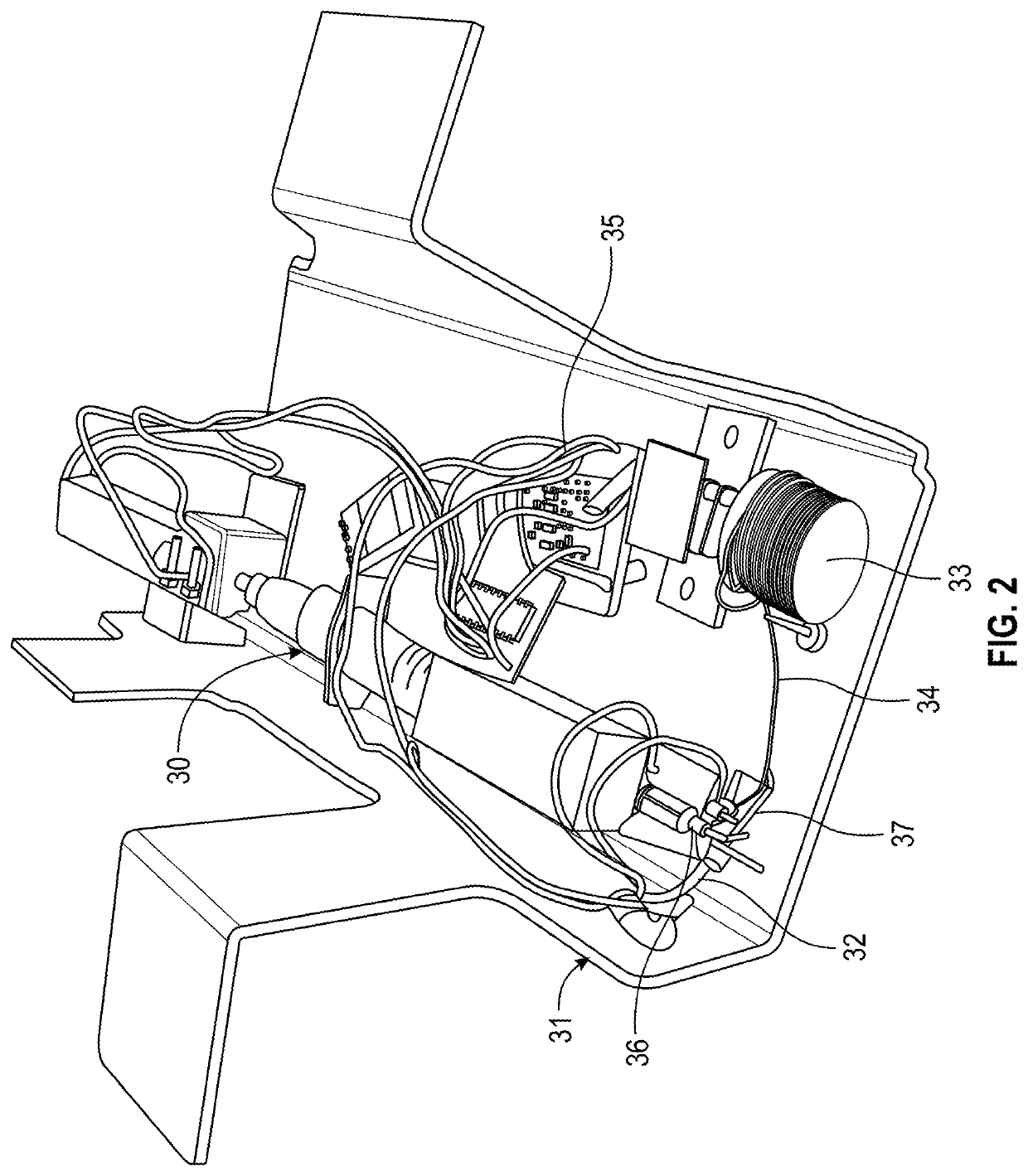Method of using a device capable of controlled flight
a technology of controlled flight and flight control, which is applied in the direction of process and machine control, instruments, additive manufacturing processes, etc., can solve the problems of limited range and type of structures that may be built, limit the size and scope of work they may act upon, etc., and achieve accurate and efficient building of structures.
- Summary
- Abstract
- Description
- Claims
- Application Information
AI Technical Summary
Benefits of technology
Problems solved by technology
Method used
Image
Examples
Embodiment Construction
[0105]The present invention seeks to provide new and improved uses of aerial devices capable of controlled flight. Whilst various embodiments of the invention are described below, the invention is not limited to these embodiments, and variations of these embodiments may well fall within the scope of the invention which is to be limited only by the appended claims.
[0106]FIG. 1 illustrates a dispensing assembly 10 in accordance with an embodiment of the invention. As will be described in more detail below, dispensing assembly 10 is used to store, mix and dispense two or more chemicals that when combined produce an adhesive or other curable substance such as a foam.
[0107]Dispensing assembly 10 comprises actuator portion 11 and mixing portion 12. Actuator portion 11 and mixing portion 12 are each coupled to a pair of containers or reservoirs 13 and 14. Each reservoir 13 and 14 contains a chemical stored therein.
[0108]Actuator portion 11 comprises lead screw 15 driven by motor 16. Lead s...
PUM
| Property | Measurement | Unit |
|---|---|---|
| time | aaaaa | aaaaa |
| time | aaaaa | aaaaa |
| time | aaaaa | aaaaa |
Abstract
Description
Claims
Application Information
 Login to View More
Login to View More - R&D
- Intellectual Property
- Life Sciences
- Materials
- Tech Scout
- Unparalleled Data Quality
- Higher Quality Content
- 60% Fewer Hallucinations
Browse by: Latest US Patents, China's latest patents, Technical Efficacy Thesaurus, Application Domain, Technology Topic, Popular Technical Reports.
© 2025 PatSnap. All rights reserved.Legal|Privacy policy|Modern Slavery Act Transparency Statement|Sitemap|About US| Contact US: help@patsnap.com



